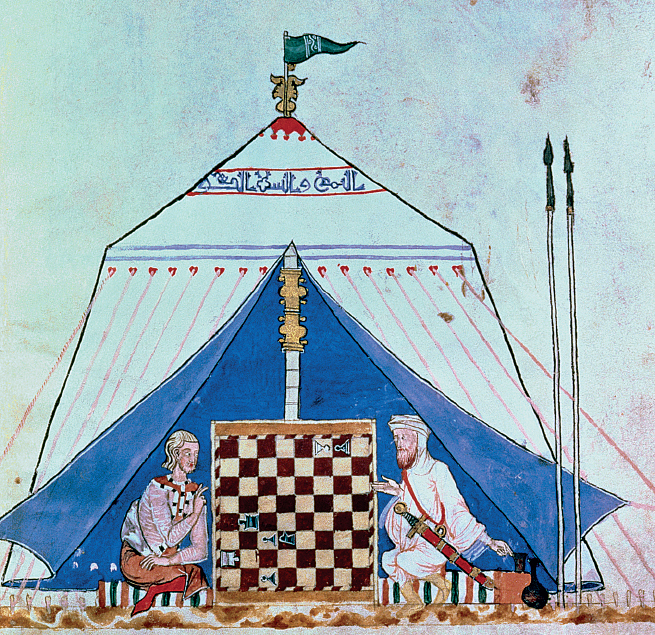How did Muslims and Christians come into contact with each other, and how did they view each other?

DDuring the early centuries of its development, Islam came into contact with the other major religions of Eurasia — Hinduism in India, Buddhism in Central Asia, Zoroastrianism in Persia, and Judaism and Christianity in western Asia and Europe. However, the relationship that did the most to define Muslim identity was the one with Christianity. The close physical proximity and the long history of military encounters undoubtedly contributed to making the Christian-
European Christians and Middle Eastern Muslims shared a common Judeo-
In the Middle Ages, Christians and Muslims met frequently in business and trade. Commercial contacts, especially when European merchants resided for a long time in the Muslim East, gave Europeans familiarity with Muslim art and architecture. Likewise, when in the fifteenth century Muslim artists in the Ottoman Empire and in Persia became acquainted with Western artists they admired and imitated them. Also, Christians very likely borrowed aspects of their higher education system from Islam.
In the Christian West, Islam had the greatest cultural impact in Andalusia in southern Spain. Between roughly the eighth and twelfth centuries Muslims, Christians, and Jews lived in close proximity in Andalusia, and some scholars believe the period represents a remarkable era of interfaith harmony. Many Christians adopted many aspects of Arabic culture. These assimilated Christians, called Mozarabs (moh-
However, Mozarabs soon faced the strong criticism of both Muslim scholars and Christian clerics. Muslim teachers feared that close contact between people of the two religions would lead to Muslim contamination and become a threat to the Islamic faith. Christian bishops worried that a knowledge of Islam would lead to confusion about essential Christian doctrines. Both Muslim scholars and Christian theologians argued that assimilation led to moral decline.
Thus, beginning in the late tenth century, Muslim regulations closely defined what Christians and Muslims could do. A Christian, however much assimilated, remained an unbeliever, a word that carried a pejorative connotation. Mozarabs had to live in special sections of cities; could not learn the Qur’an, employ Muslim workers or servants, or build new churches; and had to be buried in their own cemeteries. A Muslim who converted to Christianity was sentenced to death. By about 1250 the Christian reconquest of Muslim Spain had brought most of the Iberian Peninsula under Christian control. With their new authority, Christian kings set up schools that taught both Arabic and Latin to train missionaries.
Beyond Andalusian Spain, mutual animosity limited contact between people of the two religions. The Muslim assault on Christian Europe in the eighth and ninth centuries left a legacy of bitter hostility. Christians felt threatened by a faith that acknowledged God as creator of the universe but denied the Trinity and that accepted Jesus as a prophet but denied his divinity. Europeans’ perception of Islam as a menace helped inspire the Crusades of the eleventh through thirteenth centuries (see “The Course of the Crusades” in Chapter 14).
Despite the conflicts between the two religions, Muslim scholars often wrote sympathetically about Jesus. For example, the great historian al-
In the Christian West, both positive and negative views of Islam appeared in literature. The Bavarian knight Wolfram von Eschenbach’s Parzival and the Englishman William Langland’s Piers the Plowman reveal broad-
Even when they rejected each other most forcefully, the Christian and Muslim worlds had a significant impact on each other. Art styles, technology, and even institutional practices spread in both directions. During the Crusades Muslims adopted Frankish weapons and methods of fortification. Christians in contact with Muslim scholars recovered ancient Greek philosophical texts that survived only in Arabic translation.
>QUICK REVIEW
Why did Christian-